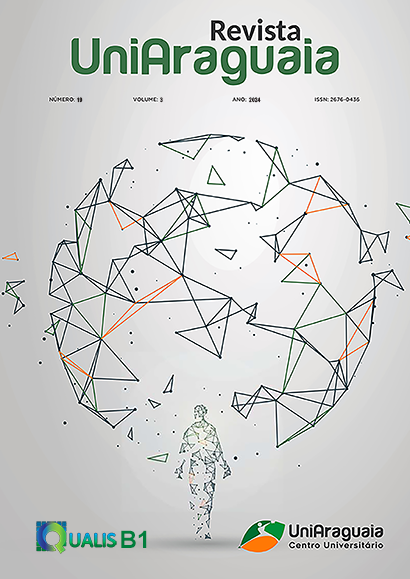COMBINED PHYSICAL TRAINING AS A STRATEGY FOR WEIGHT LOSS IN OBESE INDIVIDUALS: A NARRATIVE REVIEW
Abstract
Obesity is one of the major public health problems worldwide. According to the 2019 Health Survey by the Brazilian Institute of Geography and Statistics (IBGE), one in four people aged 18 or older was obese, equivalent to 41 million people. Excessive weight gain contributes to various illnesses such as diabetes, cancer, and hypertension. The primary goal of this article is to review the aspects of strength training combined with aerobic exercise as a weight loss aid and the importance of prescribing physical exercises for obese patients, aiming to improve their quality of life, respecting their limitations, and contributing to weight reduction, self-esteem improvement, and prevention of other diseases. The methodology used was a literature review, utilizing studies related to obesity, weight loss, strength training, and aerobic exercise. The articles were selected to elucidate the proposed questions, allowing a discussion on aspects such as the influence on physical activity levels and daily caloric expenditure, which can aid in weight loss and body composition modification, increase caloric expenditure, muscle hypertrophy, and Basal Metabolic Rate. This study reflects on the importance of strength training programs combined with aerobic exercises as essential tools to make obese individuals more active. As a result, it presents the positive aspects of combined strength and aerobic training as an efficient and important alternative to aid in weight loss.
Downloads
Published
Issue
Section
License

This work is licensed under a Creative Commons Attribution 4.0 International License.
The copyright of the published articles will be transferred to the Uniaaraguaia Magazine, allowing its subsequent reproduction as transcription and with due citation of source. In the event of acceptance and before the publication of the article, the plaintiff (s) shall write a statement formally transferring copyright to the magazine.
The author may also print and distribute copies of his article, provided that he mentions that the rights belong to the Uniaaraguaia Magazine.
Author rights include the right to reproduce in full or partly by any means, distribute this article, including figures and photographs.
By submitting originals to the Uniaaraguaia magazine, the author or authors express agreement with the following terms:
a) Authors maintain copyright and grant Uniaraguaia magazine the right of first publication, with the work simultaneously licensed under the Creative Commons Attribution license that allows the sharing of work with recognition of the authorship and initial publication in this magazine.
b) Authors are authorized to assume additional contracts separately, for non-expiration distribution of the work version published in this magazine (eg publish in institutional repository or as book chapter), with recognition of authorship and initial publication in this journal.
c) Authors are allowed and are encouraged to publish and distribute their work online (eg in institutional repositories or on their personal page) to any point before or during the editorial process, as this can generate productive changes as well as increase the impact and citation of published work.

